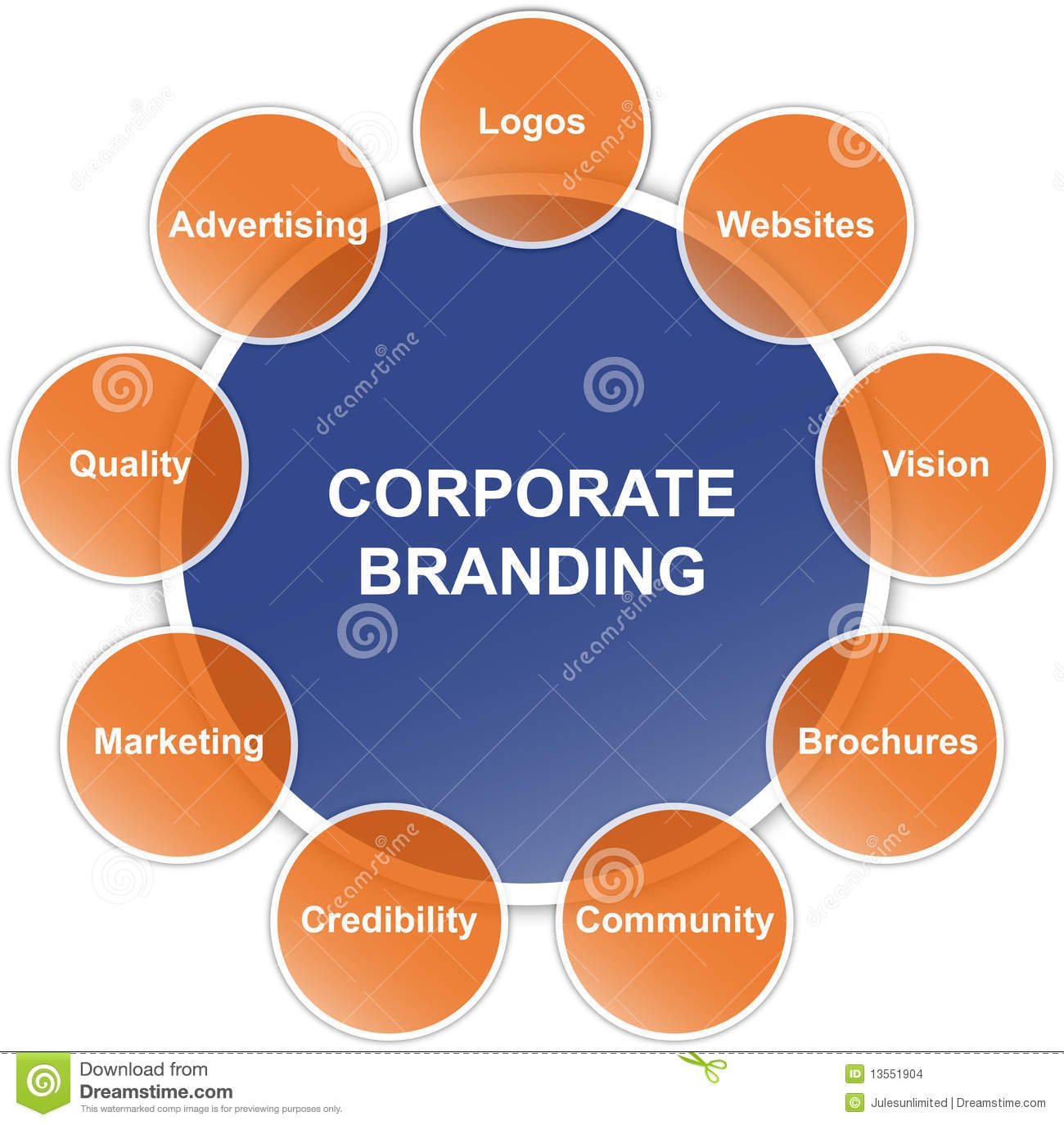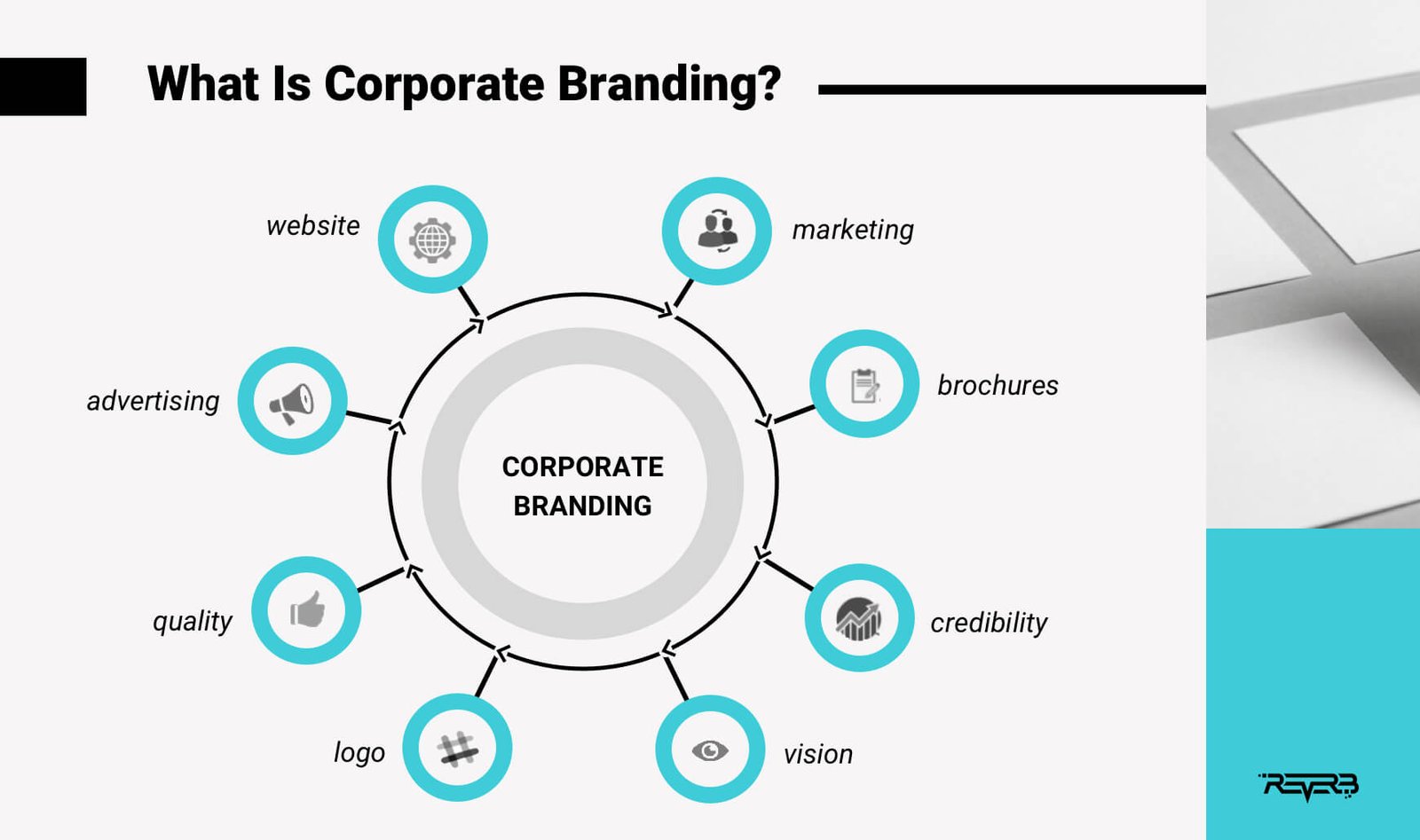Corporate Branding
Corporate branding is an essential aspect of any successful business.
It is the process of creating a unique identity for a company that sets it apart from its competitors.
In today’s globalized market, corporate branding in English language has become increasingly important as businesses seek to expand their reach beyond their local markets.
This process involves developing a clear brand message in English that resonates with customers and conveys the values and ideals of the company.
In this blog, we will explore the importance of corporate branding in English and how businesses can effectively develop their brand messaging to achieve success on a global scale.

1. What is Corporate Branding?
If you’re looking for ways to establish your company’s unique identity, then corporate branding might be the solution you need. Corporate branding involves using your company’s name, logo, and other visual elements to create an image that helps you stand out in the market.
One of the major advantages of corporate branding is that it promotes your brand name over individual products or services. This can be especially effective if you have a wide range of products or services under your umbrella. By creating a unified image and message, you can build a strong reputation for your company as a whole.
Another important benefit of corporate branding is that it can enhance customer trust and loyalty. When customers see a consistent and recognizable image associated with your company, they’re more likely to feel comfortable doing business with you. They’ll also be more likely to return for future purchases, thanks to the positive experiences they’ve had with your brand.
It’s important to note that there’s a difference between branding and institutional image.
While branding focuses on promoting your company’s name and visual elements, institutional image refers to the broader sense of who your company is and what it stands for. In other words, branding is a tool for conveying institutional image, but it’s not the only aspect of it.
Trademark law is also a crucial component of corporate branding. By obtaining trademarks for your company’s name and logo, you can protect your brand from counterfeiters and build a stronger legal case if someone attempts to infringe on your intellectual property rights.
Brand marketing is an essential tool for successful corporate branding, allowing you to create engaging content and experiences that help bring your brand to life. Effective brand marketing should be tailored to your target audience and tailored to their preferences and interests.
The internet has revolutionized brand marketing, making it easier than ever to reach new audiences and engage with customers on a more personal level. Social media marketing, influencer collaborations, and email marketing are all powerful tools for building your brand online.
Ultimately, effective corporate branding is all about presenting a consistent and compelling image of your company to the world. By focusing on the key elements of branding – from trademark protection to brand marketing to online engagement – you can establish a brand that resonates with your target audience and sets you apart from the competition.

2. Advantages of Corporate Branding
Advantages of Corporate Branding:
Corporate branding is an essential part of any business, and it offers many benefits to the company. In this section of our blog post, we will explore the advantages of corporate branding.
- Enhances Business Image:
Corporate branding improves the image of the company in the eyes of its customers, suppliers and stakeholders. It creates a positive perception of the company that helps to build trust, reliability and credibility in the market. Corporate branding helps to differentiate the company from its competitors and make it more memorable in the minds of the customers. - Creates Brand Loyalty:
A strong corporate branding can create brand loyalty among customers. It helps to build an emotional connection, trust and confidence with the brand. Customers tend to buy the products and services of the brand that they trust, and this creates a sustainable customer base for the company. Brand loyalty also increases customer retention and referral rates, which helps in improving the overall sales and growth of the company. - Increases Market Share:
Corporate branding is a marketing tool that helps the company to reach more customers and increase its market share. A good reputation and recognition of the brand attract more customers, and this translates into increased sales and revenue for the company. Corporate branding also creates a competitive advantage for the company by making it visible and attractive to potential customers. - Improves Employee Morale:
Corporate branding also provides a sense of pride and identity to the employees of the company. If employees are proud of the company they work for, they tend to work harder and are more committed to delivering high-quality work. Corporate branding can also help to attract and retain talent within the company.
In conclusion, corporate branding has many advantages, including improving the business image, creating brand loyalty, increasing market share and improving employee morale. By investing in corporate branding, companies can build a strong and successful brand that is recognized and trusted in the market.
3. How Corporate Branding Enhances Customer Trust and Loyalty?
Have you ever wondered why some customers stick with a brand for years, while others constantly jump from one product to another? The secret lies in corporate branding.
When a company invests in building a strong corporate brand, it not only sets itself apart from its competitors, but also enhances customer trust and loyalty.
Corporate branding is not limited to just designing a catchy logo and slapping it on products.
It is much more comprehensive than that. It involves shaping the corporate identity, values and culture, and communicating them to customers through all touchpoints. A strong corporate brand represents a clear promise to customers, which they can rely on every time they interact with the company.
The advantages of corporate branding are numerous. It helps a company to build a positive reputation, improve market share, and drive sales.
By creating a consistent and recognizable image, customers are more likely to remember and recommend the company to their peers. But the most significant benefit of corporate branding is that it creates long-lasting trust and loyalty.
When a company consistently delivers on its brand promise, customers learn to trust it over time.
They know that what they see is what they get, and they can rely on the company to meet their needs. This trust leads to repeat purchases and loyal customers who become advocates for the brand.
Moreover, a strong corporate brand can create emotional connections with customers. Customers don’t just buy products; they buy experiences and emotions. A well-crafted corporate brand can create goodwill and positive feelings towards the company, which customers are more likely to associate with the products or services they offer.
In conclusion, corporate branding is a crucial element in enhancing customer trust and loyalty.
By investing in creating a strong corporate brand, companies can foster long-term relationships with customers, drive sales and create a positive reputation. Remember, corporate branding is not a one-time effort, but a continuous process that requires constant attention and investment.
4. Difference between Branding and Institutional Image
As you learn more about corporate branding, it’s essential to understand the distinction between branding and institutional image. While the two concepts are interrelated, they have different focuses.
Branding refers to the techniques and strategies a business uses to create a distinctive identity in the minds of its target audience. Branding efforts can include visual elements such as logos, color schemes, and taglines. They can also include marketing campaigns and social media efforts that aim to increase brand recognition and create a positive association with the company.
On the other hand, institutional image refers to the overall reputation and perception of a business in the public eye. This includes factors such as the company’s history, leadership, and approach to business.
While branding focuses more on communication and marketing strategies, institutional image is more about the tangible aspects of a company that are perceived by the public.
While branding and institutional image are distinct concepts, they are interconnected. Branding efforts can help shape a company’s institutional image, and a positive institutional image can help reinforce a strong brand identity. Both play crucial roles in creating customer trust and loyalty.
When it comes to effective corporate branding, it’s essential to consider both branding and institutional image. By creating a strong brand identity that aligns with a positive institutional image, businesses can help build a compelling and trustworthy overall brand image. This, in turn, can lead to increased sales, customer loyalty, and long-term success.
As you work on developing your corporate branding strategy, keep these concepts in mind. By focusing on both branding and institutional image, you can create a cohesive and effective brand identity that resonates with your target audience.

5. Relevance of Trademark in Corporate Branding
When it comes to corporate branding, trademarks play a crucial role in protecting your brand and distinguishing it from competitors. A trademark is a unique symbol, phrase, or name that represents your company and its products or services. By registering a trademark, you secure exclusive rights to use it in commerce, which helps build brand recognition and reinforces customer loyalty.
Institutional image and branding may focus on the company as a whole, but trademarks are specific to products or services, making them an indispensable tool for effective corporate branding. A well-designed trademark can convey the core values of your company, imbuing your products with a distinct personality and identity. This can help you target specific consumer demographics and create a lasting impression on potential customers.
Brand marketing is another essential aspect of corporate branding that cannot be overlooked.
From creating a catchy slogan to designing an eye-catching logo, brand marketing strategies help promote your company and products, reinforce your brand message, and establish credibility with potential customers.
Effective brand marketing helps build brand loyalty and promote sales, making it an integral part of corporate branding.
The internet has significantly changed the way we approach branding and marketing, making it easier than ever for businesses to reach a broader audience and connect with potential customers worldwide.
Successful corporate branding strategies must be adapted to ensure that they resonate with digital consumers, which involves a strong online presence, effective branding, and trademark protection.
In conclusion, if you want to achieve successful corporate branding, you must recognize the importance of trademarks. They protect your brand and help distinguish it from the competition, reinforcing customer loyalty and enhancing brand recognition.
By investing in effective brand marketing strategies, you can ensure that your company and its products stand out in a crowded marketplace and attract new customers, driving sales and growth for your business.
6. Brand Marketing
If you want to differentiate your products or services from competitors, brand marketing is essential.
In this section, we will discuss the importance of brand marketing as a basic tool for effective corporate branding.
To begin with, brand marketing involves communication of your brand, products, and services to the public in order to convert potential customers into actual customers. This is accomplished through various marketing channels, such as print ads or social media marketing campaigns.
Effective brand marketing has a significant impact on sales generation, as it creates brand awareness and recognition among customers. By enhancing customer trust and loyalty, it also helps companies to establish a strong position in the marketplace.
One of the key elements of effective brand marketing is creating a consistent brand identity across various marketing channels. This ensures that communication attempts are as effective as possible, and that the brand is visible in all marketing materials.
In today’s digital era, the internet has changed the meaning of brand marketing. With the rise of e-commerce and social media, digital channels have become a powerful tool for companies to reach and engage with customers. Therefore, an effective brand marketing strategy must take digital channels into account.
In summary, brand marketing is a basic tool for corporate branding that can help companies differentiate themselves from competitors, establish a strong position in the marketplace, and generate sales. By creating a consistent brand identity and utilizing digital channels, companies can ensure that their brand marketing efforts are as effective as possible.

A Basic Tool for Corporate Branding
A Basic Tool for Corporate Branding
When it comes to corporate branding, having effective branding strategies is crucial for building a strong identity for your business. And one basic tool that can help you achieve this mission is your company logo.
Your logo serves as the visual representation of your brand, and it’s one of the first things that people will associate with your business. It should be easily recognizable, memorable, and visually appealing to make a lasting impression on your target audience.
Having a well-designed logo can also help you establish brand consistency across different marketing channels. It can be used in all your marketing materials, from your website to your social media accounts, to create a cohesive and professional image that customers will trust and recognize.
In addition to your logo, you should also consider other elements of your corporate identity like your color palette, typography, and overall design style. These factors should all work together to create a distinctive and cohesive visual identity for your business.
By investing time and energy in your corporate branding, you’ll not only enhance your customer trust and loyalty, but also attract attention to your brand and build long-lasting relationships with your target audience.
So, if you’re looking to take your business to the next level, consider starting with building a strong corporate identity through effective branding strategies, with your logo being a basic tool to help you achieve this mission.
7. How Internet has Changed the Meaning of Brand Marketing
As you previously learned in this blog, branding is an essential marketing practice that companies use to create a recognizable name, symbol, or design for their products or services. However, the rise of the internet has significantly impacted the meaning of brand marketing.
Gone are the days when brand marketing involved only corporate logos, covers, and jingles. The internet has opened new doors for businesses to reach their target audience with new and innovative digital marketing strategies. With the rise of social media, companies can now create brand communities where people who share their interests and values can come together.
So, how can you take advantage of the internet to enhance your corporate branding? One way is through online video and audio broadcasts.
Creating a strong online presence through videos and podcasts can effectively communicate your brand’s message to your audience. Additionally, the use of participation initiatives can encourage people to connect with your brand and building brand loyalty.
But it’s not just about the online presence. Offline marketing can still play a significant role in driving online engagement. Successful brands launch offline initiatives to connect with their audience on a personal level, creating a memorable and long-lasting impression.
To generate sales through corporate branding, companies must focus on building customer trust and loyalty. A strong brand creates a connection between the brand and its customers, which can lead to repeat business, positive word-of-mouth marketing, and ultimately, growth for the company.
In conclusion, corporate branding has evolved with the rise of the internet. With digital marketing strategies and the creation of brand communities, businesses must stay relevant and use a mix of online and offline initiatives to connect with their audience effectively.
Building customer trust and loyalty is key to sales generation, and by incorporating these key elements of effective corporate branding, your company can thrive in today’s digital age.

8. Sales Generation through Successful Corporate Branding
When it comes to successful corporate branding, sales generation is a crucial factor. After all, revenue generation is the most important responsibility of any company. If your branding strategy is effective, it can lead to increased sales and revenue.
One key element of effective corporate branding is understanding your target audience and their behaviors. By doing so, you can create a brand that resonates with them and meets their needs. Additionally, offering customers a variety of purchasing options can help solve their problems and create an opportunity for companies to reconsider their overall strategy.
Another important aspect of corporate branding is creating a written plan that outlines how your brand will be applied to the company over time.
This plan should list the most important branding elements, including public brand awareness, search engine optimization, and marketing efforts.
To achieve successful sales generation through branding, it’s important to convey and communicate your brand idea in a way that resonates with potential customers. This means understanding the true value of your product and the real reason why people buy brands.
By implementing a sales strategy that considers these factors, you can facilitate business transactions between your company and customers. With effective branding and marketing efforts in place, you can enhance customer trust and loyalty, leading to increased sales and revenue for your company.
9. Key Elements of Effective Corporate Branding
Now that you understand the basics of corporate branding, let’s dive into the key elements of creating an effective brand. These elements are essential to establish a strong and recognizable identity for your company, which will ultimately lead to increased customer trust and loyalty.
- Brand Purpose: As we previously discussed, having a clear understanding of why you are in business is critical for successful branding. Make sure your purpose is authentic and aligns with your company’s values.
- Brand Position: Your brand position defines how you want to be perceived in the market. Develop a unique and consistent positioning that sets you apart from your competitors.
- Logo Design: Your logo is one of the most critical aspects of your brand identity. Design a simple, memorable, and versatile logo that represents your brand purpose and position.
- Wordmark: A wordmark logo is often the simplest and most effective way to represent your brand name. Make sure it is readable, visually appealing, and aligned with your brand identity.
- Community: Engage with your audience on social media and other platforms to build a loyal customer base. Show them that you care about their needs and concerns.
- Purpose-driven: Communicate your brand purpose to your customers and employees through your marketing strategies and internal communications. Foster a sense of belonging among your team and customers.
- Sales Generation: Effective branding leads to increased sales and revenue. Use your brand position and purpose to create compelling marketing campaigns that resonate with your target audience.
- Brand Marketing: Develop a comprehensive brand marketing plan that includes advertising, content marketing, and other promotional activities. Ensure that all branding elements are consistent across all channels.
- Trademark: Protect your brand identity by registering your trademark. This step is crucial to prevent others from using your brand name or logo without permission.
In conclusion, creating an effective corporate branding strategy requires a combination of these key elements. By developing a unique and consistent brand identity, communicating your purpose, and engaging with your audience, you can establish trust and loyalty and drive sales growth.
Please visit our main website for more information and more services we offer: www.wis-consultancy.com



